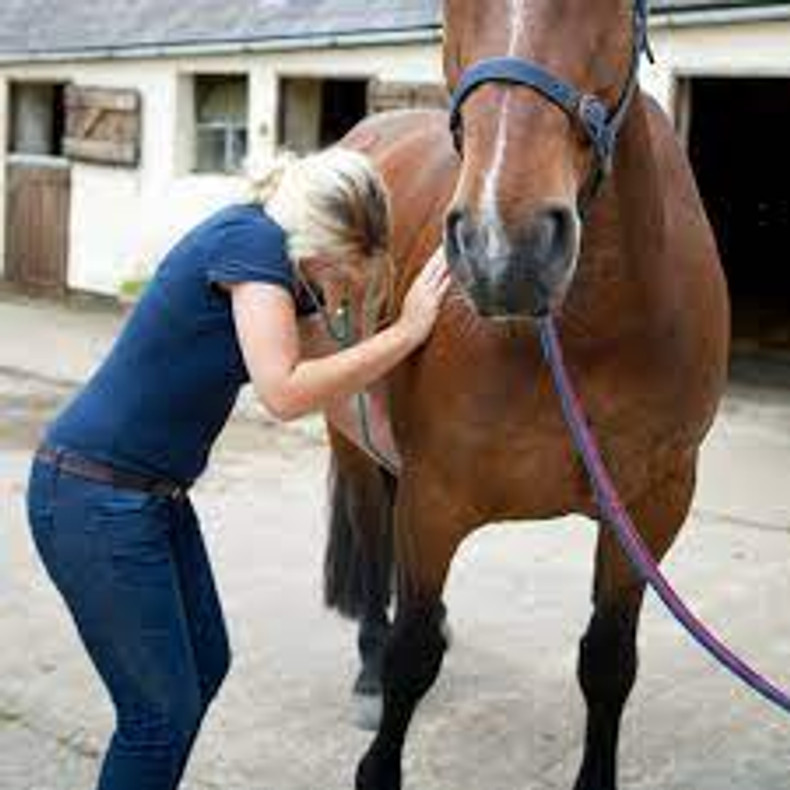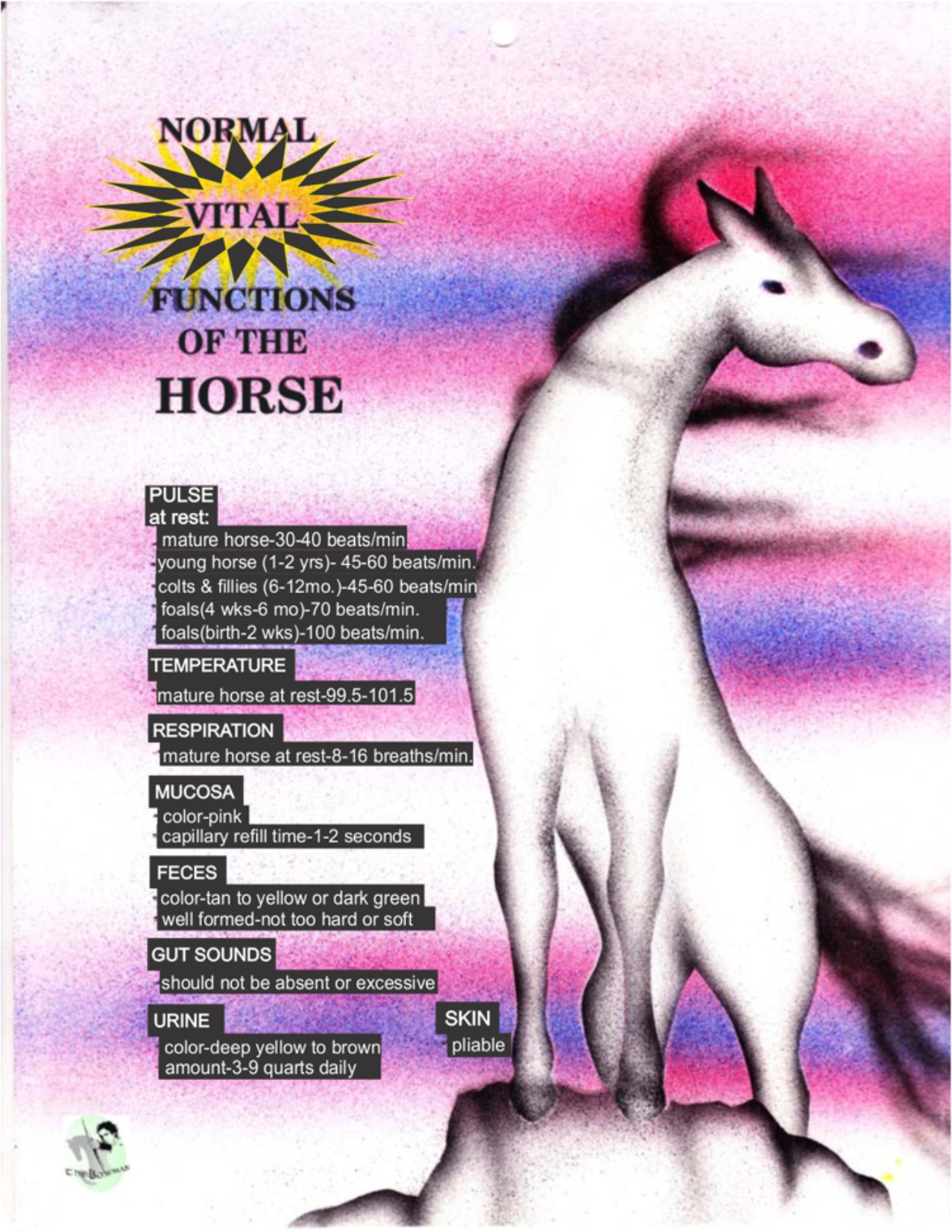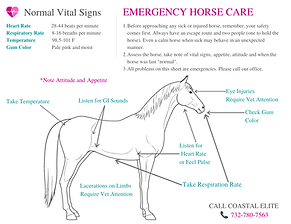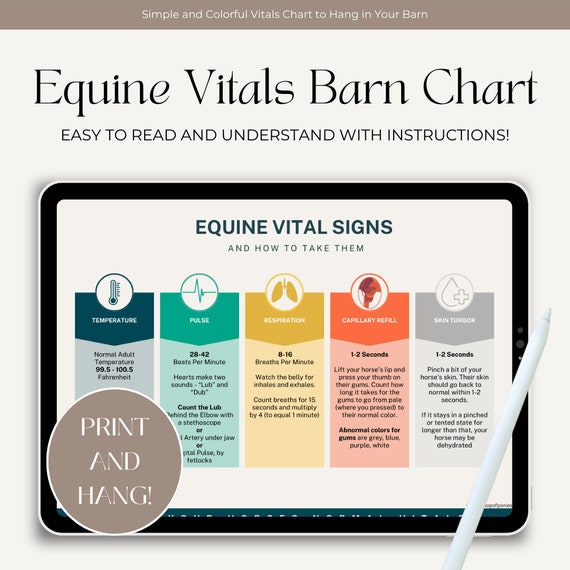Vital Signs: Normal Ranges Every Horse Owner Should Know

Understanding your horse’s vital signs is crucial for maintaining their health and detecting early signs of illness. This guide covers the essential vital signs, their normal ranges, and how to measure them accurately.
Key Vital Signs for Horses

| Vital Sign | Normal Range | How to Measure |
|---|---|---|
| Heart Rate | 28-44 beats per minute | Use a stethoscope or palpate the artery on the jaw or chest |
| Respiratory Rate | 8-16 breaths per minute | Observe flank movements or use a stethoscope |
| Temperature | 99-101.5 °F (37.2-38.6 °C) | Use a digital rectal thermometer |
| Capillary Refill Time (CRT) | Less than 2 seconds | Press on the gums and observe color return |
| Mucous Membrane Color | Pink and moist | Check inside the mouth for color and moisture |
Why Monitoring Vital Signs Matters

Regular monitoring helps detect health issues early, such as infections, dehydration, or stress. Changes in vital signs can indicate pain, fever, or cardiovascular problems, allowing for timely veterinary intervention.
How to Take Vital Signs Correctly
- Heart Rate: Count beats for 15 seconds and multiply by 4 for bpm.
- Respiratory Rate: Count breaths for 30 seconds and multiply by 2.
- Temperature: Ensure the thermometer is clean and lubricated before use.
- CRT and Mucous Membranes: Use gentle pressure and good lighting.
Factors Affecting Vital Signs
- Exercise, stress, and environmental temperature can influence readings.
- Age and fitness level also play a role.
FAQ
Q: How often should I check my horse’s vital signs?
A: Ideally daily, especially if your horse is ill or under stress.
Q: What if my horse’s temperature is above normal?
A: Contact your veterinarian as it may indicate fever or infection.
Q: Can vital signs vary between breeds?
A: Yes, some variation exists, but the ranges provided are general guidelines.
Conclusion
Knowing and regularly monitoring your horse’s vital signs empowers you to maintain their health proactively. Early detection of abnormalities can prevent serious health issues and ensure your horse’s well-being.
